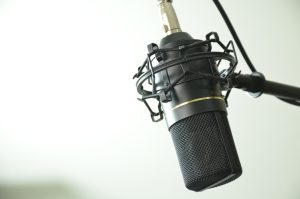A hybrid educational format combining in-person attendance, online teaching, and asynchronous preparation
A hybrid format for an entire education program (and all courses within it) that combines in-person group instruction and online learning, using both recordings and live exercises. This could be via a low-latency connection (LoLa). A digital platform provides the foundational structure for the program, including schedules, courses, teaching materials, links to online sessions, etc.
Navigate the different aspects of the activity here

The purpose of the activity
- To reach students worldwide
- To enable completion of the program from anywhere in the world
- To offer flexible participation options, allowing students to choose how they want to participate
- To let students maintain ties with their local music and educational communities while enrolled
Target audience
Music students and conservatory students

Technology/setup
- A classroom for in-person group instruction at the institution
- A digital platform that supports the program’s structure, such as the institution’s Learning Management System (LMS) or a file-sharing tool
- An online meeting platform, like Zoom, Teams, or WhatsApp, that the institution has access to
- Considerations for choosing the digital and meeting platforms:
- Subscription type and cost, including discounts for education versions with bulk licenses
- Number of students involved
- Compatibility with the program’s structure and the institution’s needs
- A teacher setup which can include a piano, camera, microphones, and apps for online teaching, located either at the institution or the teacher’s home. This setup can provide multiple technical options, such as various camera angles, sound, lighting, instrument use, etc. However, a lot of teaching can proceed effectively using a simple mobile phone, tablet, or computer
- A student setup, often at home, that meets requirements for participating in the hybrid format
- A mobile phone, tablet, or computer to access online meeting rooms and the digital platform
- Consideration on which type of internet connection to use, such as WiFi (wireless or wired) with potential sound delays or, where available, LoLa (low latency) connections that minimize delay. For most instruction (except for synchronous playing/singing together), slight delays are manageable since participation usually alternates between speaking and playing, and teachers are skilled in identifying and addressing student challenges despite minor lags
Requirements
Teacher
- A willingness to teach using a hybrid format
- Curiosity to discover which activities work best online, which may need adjustments, and which are best suited to in-person or asynchronous settings
- Patience with both equipment and students
- Accepting that teaching in an online setting is not identical to the physical classroom in terms of sound quality and student interaction, but understanding that it also offers new possibilities
- Finding a technical setup that aligns with the subject being taught and is feasible
Student
- A willingness to follow an education with a hybrid format
- Patience with both equipment and the teacher
- Accepting that the online setting differs from the physical classroom, especially regarding sound and teacher interaction
- Finding a technical setup suitable for their participation in the program and feasible for them to establish

Experiences with the activity
Students at the innovative jazz/pop choir program at the Royal Academy of Music, Aarhus/Aalborg (RAMA), complete both master’s and soloist programs using a hybrid/HyFlex format combining boot camps, online teaching, and asynchronous preparation. This allows students to work with their own choirs between boot camps and to create recordings and exercises that are used in class. One student explains, “it’s incredibly intense, but it’s a great balance to have a full week on the floor and then a weekly/bi-monthly online session to reflect on the last boot camp, prepare for the next, and, of course, witness real-life choir work”. The HyFlex format allows students to access course materials at their own pace. Another student notes, “the HyFlex format allows me to receive and absorb the material in a much more flexible timeframe”. However, the online meeting format does not suit everyone. One student mentions, “I find it hard to concentrate for long in this setup”. There is also an option to join boot camps online, although some feel that “the mix of long-distance and local students undermines the benefits of in-person study and disrupts the experience for those wanting complete engagement”.
In relation to more traditional approaches in music education, program director Jim Daus Hjernøe explains that “one model does not fit all needs” and suggests it’s essential to consider if a format is chosen because it’s “convenient for you [the teacher] but doesn’t add value for the students”. He observes that the combination of different teaching approaches offers students greater variety and flexibility. He also notes that teaching in a digitally supported format has enhanced his teaching skills, stating, “I think I’ve become a slightly better teacher because digital-supported teaching sharpens my focus on my teaching approach”.

As a choir conducting teacher, Jim Daus Hjernøe has been part of the hybrid/ HyFlex innovative jazz/pop choir program (RAMA) with conservatory students. Listen to Jim explain the program, share his experiences, and discuss his reflections on participating in the project.